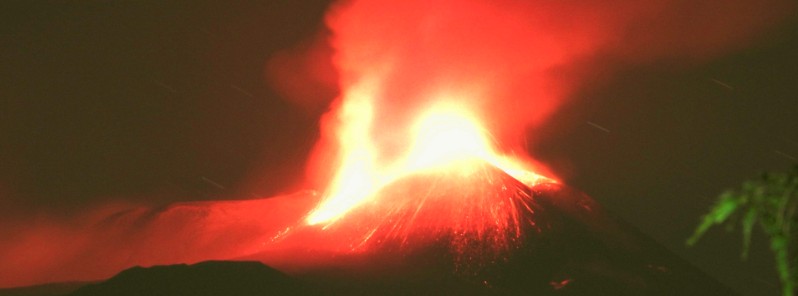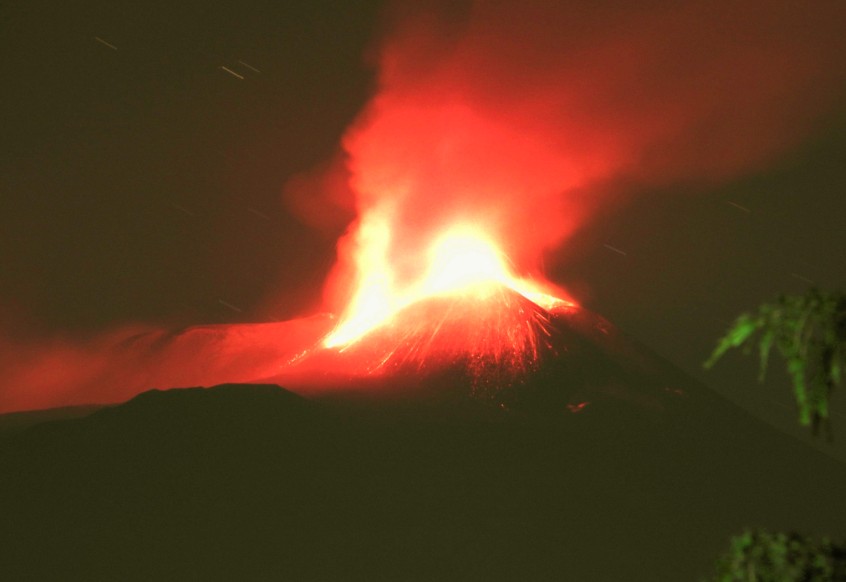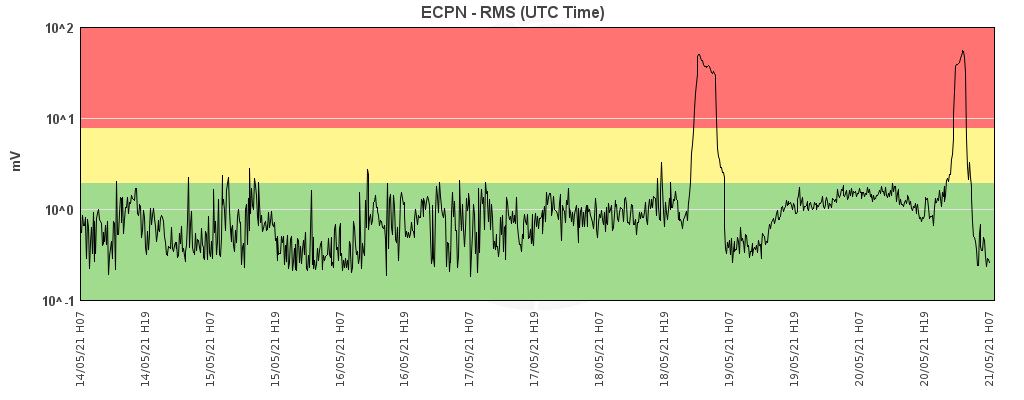Another episode of lava fountaining at Etna, Italy

Strombolian activity increased again at Etna's Southeast Crater at 23:34 UTC on May 20, 2021, with the eruptive cloud moving in the SE direction. The Aviation Color Code was raised to Red at 00:58 UTC on May 21 and lowered back to Orange at 03:07. The volcanic ash cloud rose to an estimated height of 6 km (20 000 feet) a.s.l.
At around 01:04 UTC on May 21, strombolian activity evolved into lava fountaining — the 19th paroxysmal eruptive episode since February 16, just 48 hours after the 18th.
Lava fountaining lasted through 02:54 UTC, producing a small lava flow toward the SW.

Lava fountaining at Etna volcano on May 21, 2021. Credit: Boris Behncke/INGV

"Lava flow is cooling down and the amplitude of volcanic tremor returned to low values, comparable to those that preceded lava fountaining," INGV said at 06:33 UTC.
Another night lit by glowing lava fountains from #Etna's Southeast Crater, 21 May 2021. Similar to, but slightly shorter and more intense than the previous paroxysm. Listen to the original sound: many detonations, and windows and doors rattling from infrasonic pressure waves. pic.twitter.com/r7I9a7i4q8
— Boris Behncke (@etnaboris) May 21, 2021
#Etna Nuova eruzione nella notte. Grandi fontane di lava pic.twitter.com/0s4nEscCPi
— Local Team (@localteamtv) May 21, 2021
Geological summary
Mount Etna, towering above Catania, Sicily's second-largest city, has one of the world's longest documented records of historical volcanism, dating back to 1500 BCE.
Historical lava flows of basaltic composition cover much of the surface of this massive volcano, whose edifice is the highest and most voluminous in Italy.
The Mongibello stratovolcano, truncated by several small calderas, was constructed during the late Pleistocene and Holocene over an older shield volcano. The most prominent morphological feature of Etna is the Valle del Bove, a 5 x 10 km (5.1 x 6.2 miles) horseshoe-shaped caldera open to the east.
Two styles of eruptive activity typically occur at Etna. Persistent explosive eruptions, sometimes with minor lava emissions, take place from one or more of the three prominent summit craters, the Central Crater, NE Crater, and SE Crater (the latter formed in 1978).
Flank vents, typically with higher effusion rates, are less frequently active and originate from fissures that open progressively downward from near the summit (usually accompanied by strombolian eruptions at the upper end).
Cinder cones are commonly constructed over the vents of lower-flank lava flows. Lava flows extend to the foot of the volcano on all sides and have reached the sea over a broad area on the SE flank. (GVP)
Featured image: Lava fountaining at Etna volcano on May 21, 2021. Credit: Boris Behncke/INGV

Spaceweather(dot)com: THE SOLAR WIND HAS ARRIVED: Earth is entering a stream of solar wind flowing faster than 500 km/s from an equatorial hole in the sun’s atmosphere. First contact on May 20th sparked a minor G1-class geomagnetic storm. Powerful eruptions on the Sun trigger earthquakes and volcano’s.